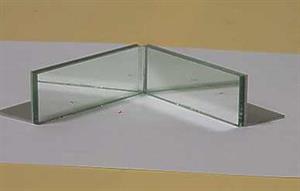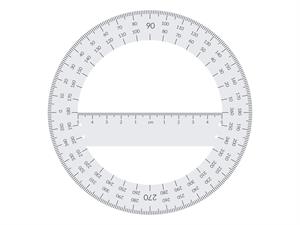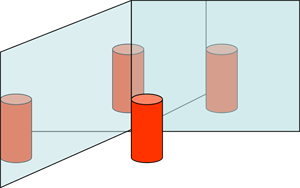PDF chapter test TRY NOW
Multiple reflections:
Multiple reflection of light is the reflection of light back and forth several times between reflecting surfaces.
This is an activity to find out how the angle of two mirrors changes the reflection of an object?
The following are the materials required to do this activity,
- Protractor
- Two identical small plane mirrors
- Modelling clay
- Small object (coin, etc.)
- Strip of paper
- Pen
- Plastic packing tape
Procedure:
- Tape your plane mirrors together so that they can be opened and closed like a hinge. Leave a small gap between the two edges (around 1/16th of an inch) to do this.

- Using your protractor, mark the angles on a piece of paper.

- Place the connected mirrors at the top of your marked angles.
- Initially, start the test with an angle of 180 degrees.
- Locate your object (you can fasten it in modelling clay as it won’t stand up on its own) in the centre of the mirrors, and look out for the reflection.
- Maintain the object in between the two mirrors and relocate the mirrors together into the other angles that you marked out in the piece of paper with your protractor.

How many objects do you see at each angle?
The number of images formed mainly depends on the angle of inclination of the mirrors. If the angle between two mirrors is a factor of 360°, then the total number of reflections is finite.
Consider θ (Theta) is the angle of inclination of the plane mirrors, then the number of images formed is equal to .
Reference:
1. http://physicswith5jaya.blogspot.com/2012/01/students-set-up-two-plane-mirrors.html
2. https://en.wikipedia.org/wiki/Plane_mirror#/media/File:TwoPlaneMirrors.svg
2. https://en.wikipedia.org/wiki/Plane_mirror#/media/File:TwoPlaneMirrors.svg
